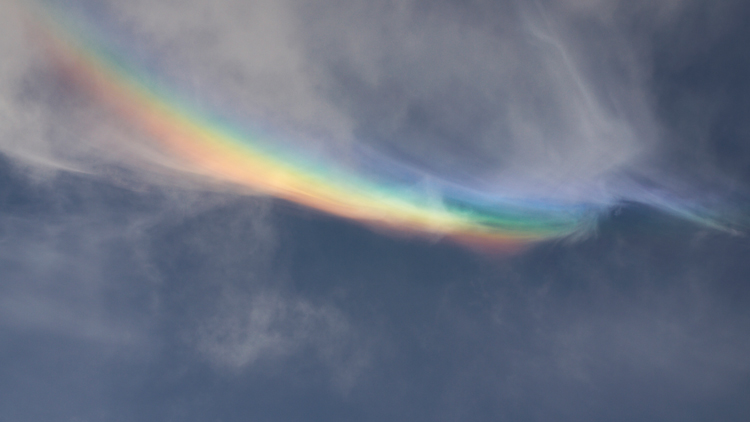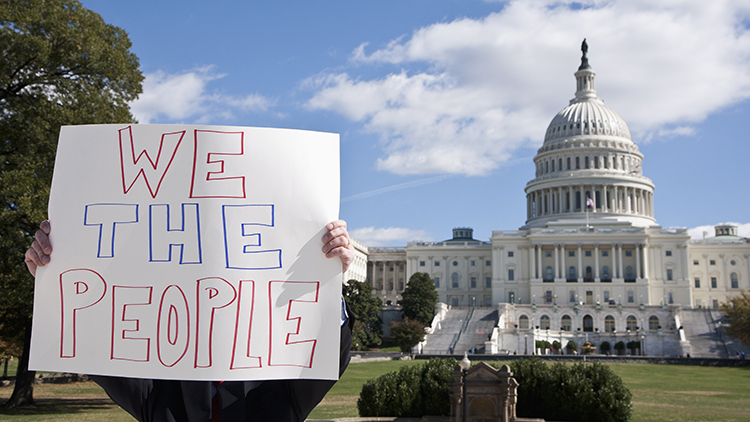
Can a rainbow really be upside down? Yes! This phenomenon is called a circumzenithal arc. Typical rainbows require two things to happen at the same time: rain and sunlight. Seems strange, right? Sometimes the Sun appears while it is still raining, and we see the sunlight through the raindrops. The raindrops act like tiny prisms. When sunlight enters the prisms, it bends or refracts. When the light is refracted, it breaks apart and creates the seven colors of the rainbow. Circumzenithal arcs occur when sunlight shines through ice crystals instead of raindrops.
A circumzenithal arc can only happen under special circumstances. The air needs to be still, without many upward or downward gusts of wind. It is also helpful if other clouds are not blocking the view. Clouds of all shapes and sizes fill the sky and hold moisture in the form of ice or water. Ice crystals are found in high-altitude cirrus clouds. Cirrus clouds are the wispy strands we see floating high across the skies. These clouds can be hidden by larger clouds that are lower in the sky.
The time of day when inverted rainbows are likely to be spotted changes depending on the time of year. In the spring and fall, keep your eye out for circumzenithal arcs mid-morning and mid-afternoon. In the summer, look at the sky in the early evening. And finally, in the winter, you are most likely to spot a circumzenithal arc from late morning to midafternoon. As you now know, there are many conditions that are necessary for a circumzenithal arc to occur. This phenomenon can be rare, and passes quickly, so stay ready and keep your eyes up!
What Do You Think? Considering all you have learned, when are you most likely to spot an inverted rainbow this week? Why?
Reading Response Click on this link to respond to your reading. Print out the response page or upload it to your classroom site.
Photo Credit: It’s a beautiful world/Getty Images



